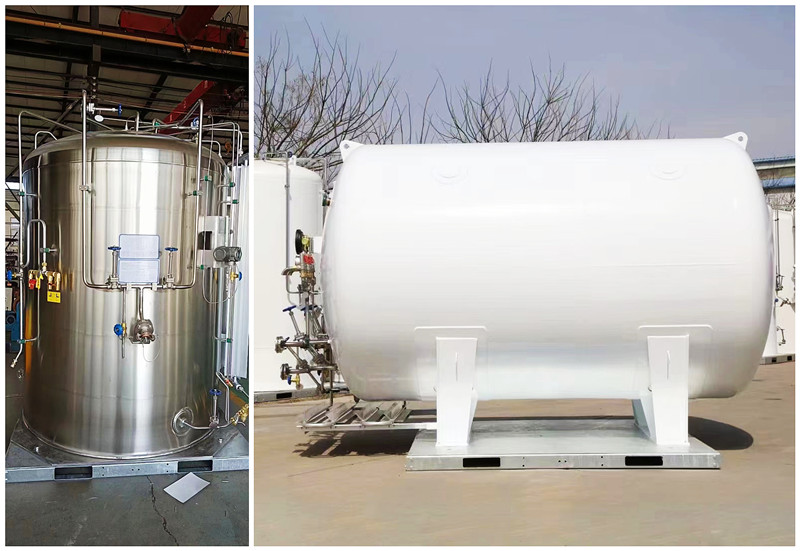For lng storage tanks, the occurrence of tumbling is a very serious matter, and it is a serious accident. The continuous high liquid level operation of the LNG storage tank increases the consequences of the “tumbling” of the liquid in the tank and increases the probability of tumbling. Next, I will tell you in detail about the impact on the occurrence of tumbling when the liquid level of the storage tank is high and the relevant operation suggestions for the liquid level of the storage tank.
There are three aspects to the occurrence of tumbling when the tank liquid level is high:
(1) When the liquid level is high, the storage tank may hold more LNG of several different components and densities, and the pump in the tank has a limited effect of circulating mixed LNG at high liquid level, resulting in stratification of the LNG in the storage tank. The upper and lower layers are more likely to form independent circulation.
(2) When the liquid level is high, the space for the downward movement of the boundary layer in the middle of the upper and lower layers is larger, which simply constitutes a larger tumbling accident.
(3) High liquid level operation makes the heating area of LNG along the height direction large, resulting in more intense transpiration in the upper layer and faster heat accumulation in the lower layer, which aggravates the process from stratification to tumbling; The volume of gas will be enormous, causing large pressure swings in the storage tank and receiving station.
The storage tank liquid level operation proposition is as follows:
(1) LNG storage tanks should try to avoid long-term continuous operation at high liquid level conditions to reduce the above-mentioned safety hazards and ensure the substantial safety of the operation of the receiving station.
(2) When the storage tank is running at a high liquid level, the density and temperature in the tank should be strictly monitored by LTD to prevent the liquid in the tank from stratifying and avoid the liquid in the tank from forming a tumbling condition. It is recommended to avoid storing LNG with obvious density differences in the same storage tank; if the stratification condition is monitored, pump circulation should be taken in time to eliminate the stratification phenomenon as soon as possible; if feasible, it is recommended to add LNG stratification alarm.
(3) When the storage tank is running at a high liquid level, the operator should pay special attention to monitoring the high liquid level alarm, and should adhere to the state of rapid response in information communication and personnel equipment. Under the condition that the difference is allowed, priority will be given to the operation plan of the next feeding.
(4) When the unloading volume is large, it is necessary to ensure that the storage tank has a suitable gas phase space. It is recommended to reduce the gas phase system pressure of the receiving station as much as possible before unloading; during the unloading period, the LNG is evenly distributed to each storage tank. Avoid situations where the liquid level in a single tank is too high.
Hansheng Pressure Vessel Industrial Co., Ltd are a manufacturer of cryogenic storage tanks, lng storage tanks, lng gas filling station equipment, cryogenic liquid transport vehicles, natural gas storage tanks, lng tankers, liquid nitrogen storage tanks, carbon dioxide storage tanks, cryogenic liquid nitrogen transport vehicles, and we produce cryogenic liquids With its advanced technology, excellent quality and excellent after-sales service, equipment such as storage tanks, tank cars, tank containers, and low-temperature insulating gas cylinders are widely accepted by many famous gas companies at home and abroad. Welcome to consult.
Post time: Apr-15-2022


